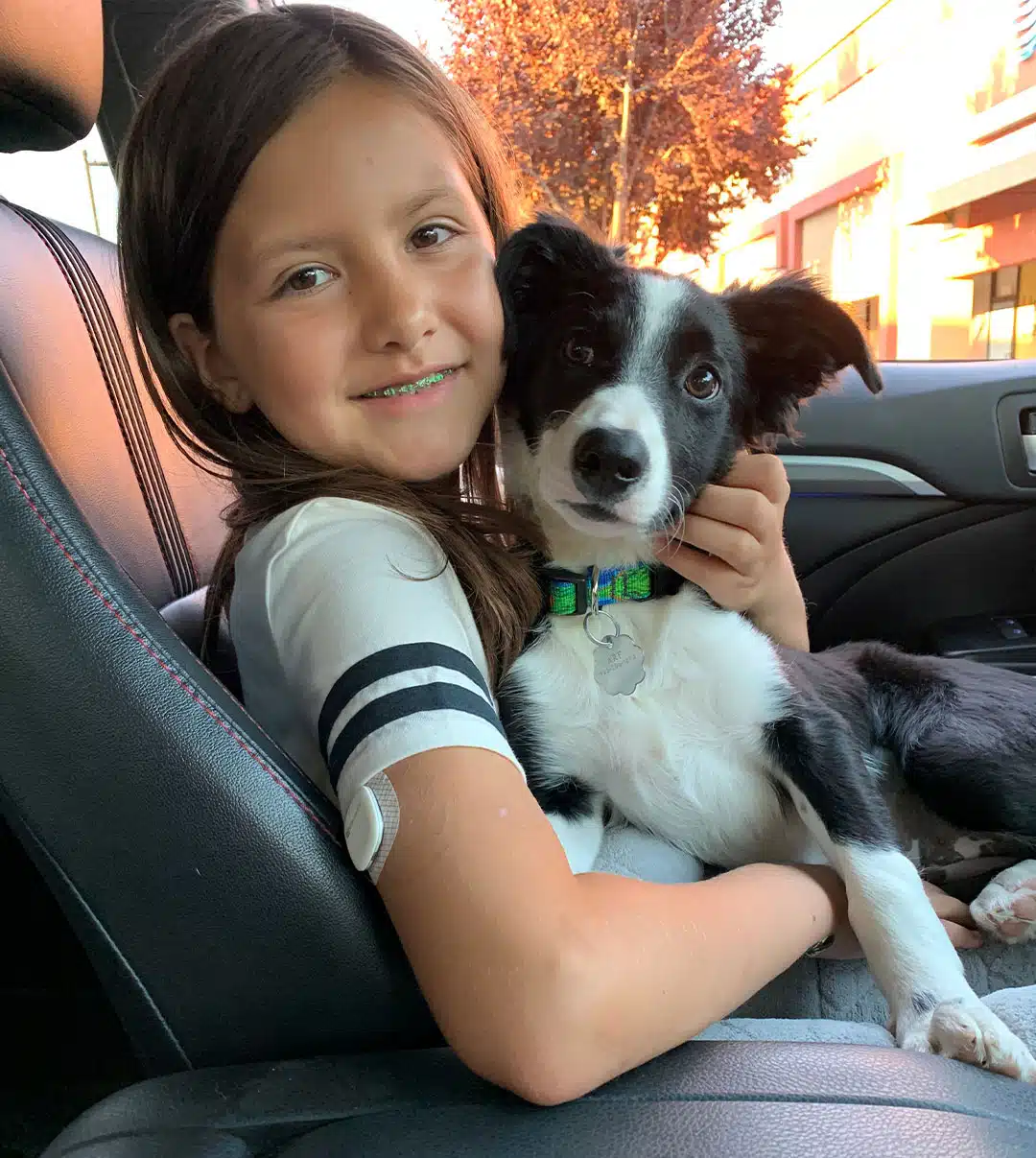Keep Cool When Temperatures Soar
During summertime, temperatures regularly climb to levels that are both uncomfortable and dangerous for your pets. Any climate that is not temperature controlled (including backyards and homes without air conditioning) can turn deadly. Be aware of your surroundings and how they will affect your pet.
Here are out top six tips to keep in mind to ensure your summer is as safe as it is fun:

1) Hydration is Key
While out and about with your pet, always carry a bowl and fresh water with you so your pet can stay hydrated on the go. You can even purchase a handy pet water bottle with a built-in bowl!
Even when staying home, be sure to provide extra fresh and cool water in an easily-accessible place. Consider placing extra water bowls around the house just to be safe!
2) Limit Outdoor Activities
When the sun is at its peak, it’s best to avoid long walks or intense play sessions outdoors. Opt for early morning or late evening strolls when temperatures are cooler and pavement surfaces are less likely to burn their paws. For all of you dog parents who have a companion that likes to play outdoors, consider water-based activities, like a kiddie pool or sprinklers to help cool them down.
Be safe around the swimming pool, too! Never leave your pet unattended near swimming pools or other bodies of water. Not only might they be a weak swimmer, but you also want to be vigilant they don’t drink chlorinated or unsafe water. After swimming, remember to rinse them off to remove salt or chlorine from their coats.
3) Create Shady Retreats
Provide your pets with shaded areas in your yard or patio, as well as cool spots inside your home. This will allow them to escape direct sunlight and seek relief from the heat.
Speaking of relief from the heat, if your pet has a heavy coat, it is usually not recommended for them to have a summer haircut; they need their coat to help regulate their body temperature. Brushing your dog or cat frequently will thin out their coat and help regulate their body temperature.
4) Never Leave Pets in Vehicles
It seems like common sense to animal lovers – never leave your dog in a hot car. What is surprising to many is the discovery of just how hot a vehicle can become on a day that feels merely warm to most of us.

A study performed by Stanford University found that even on a mild 72° day, a car’s internal temperature rockets to 116° within one hour. In fact, vehicular temperatures have been recorded as high as 159°. That’s more than enough to kill or seriously injure any pet (or person) left in the vehicle.
Even cracking the windows will not make a significant difference to the extreme temperatures inside. Dogs mainly rely on panting to cool down their bodies – a method that is not nearly as effective as sweating. Keep in mind that breeds with heavy coats, brachycephalic breeds (dogs/cats with flat faces), older pets, and pets with medical conditions may succumb to heat even faster.
If you see a pet trapped in a hot vehicle, first try to find the vehicle’s owner. Then alert the management of the business near where the vehicle is parked. If the owner does not return quickly, call animal control or the police department immediately. It is illegal for pet guardians to leave their animals in an enclosed vehicle under dangerous conditions. Law enforcement or animal control officers have the authority to break into a vehicle if they cannot locate an animals’ guardian after making a reasonable attempt to do so.
This summer, be kind to your four-legged friends and drop them off at home before running errands.
5) Be Mindful of Hot Surfaces
When going for a walk or letting your pet enjoy some outdoor time, a good rule of thumb is to test the ground with the back of your hand. If it’s too hot for you, it’s too hot for your pet’s paws as well.
- On a 77° day, ground temperatures can get as high as 125°.
- On a 86° day, ground temperatures can get as high as 135°.
- On a 87° day, ground temperatures can get as high as a whopping 143°.
If you like to exercise outside with your pet, dawn and dusk are generally the coolest parts of the day, and thus the least likely times for your pet to become overheated.
6) Recognize Signs of Heat Stress
If you think your pet is suffering from heatstroke, act immediately. Bring them into the shade or a cooler climate, and cool them by submerging them in or placing rags soaked in lukewarm (not cold or ice cold) water on their body, focusing on their head and paw pads. Call or get them to a veterinarian ASAP. Signs of heatstroke include:
- Excessive panting or difficulty breathing.
- Increased heart rate.
- Weakness.
- Drooling or foaming at the mouth.
- Seizures.
- Vomiting.
- Bloody diarrhea.
- Stupor or collapse.


